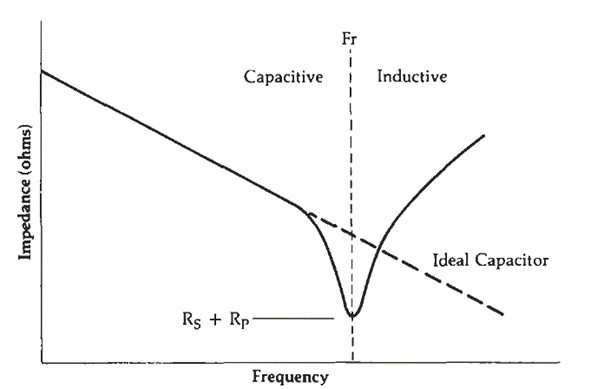Designing high-frequency circuits is a challenging endeavour. At high frequencies beyond the gigahertz range, discrete components such as capacitors and inductors start to behave in a non-ideal manner, and their correct operation is limited by their self-resonating frequency which depends on their size and shape (see Figure 1) [1].
Microstrip structures, as shown in Figure 2, are used so that the limitations of discrete components are circumvented when designing beyond the gigahertz range [2].
This project has set out to design, simulate and implement various wideband Wilkinson Microstrip Power Couplers, such as the stepped impedance variant. The design methodology consisted of initially creating a lumped element model of the broadband circuits to be designed. These were then simulated in a circuit simulator to ensure their correct operation and characteristics. The lumped element models were subsequently converted into microstrip sections of correct dimensions and simulated using an electromagnetic simulator. The same simulator was used to trim the designs in order to meet the specifications prior to sending them for fabrication. The designed structures were implemented using an FR-4 double-sided printed circuit board technology.
Finally, the microstrip circuits were characterised and tested using a vector network analyser. The measured scattering parameters were compared to those simulated using both the circuit simulator and electromagnetic simulator.


References/Bibliography
[1] Sturdivant R., “Lumped Elements at Microwave and Millimeter-wave Frequencies”, 04 June 2016.
[Online]. Available: http://www.ricksturdivant.com/2016/06/04/lumped-elements-at-microwave-and-millimeter-wave-frequencies/.
[Accessed: 04-May-2021].
[2] T. Edwards and M. Steer, “Foundations for Microstrip Circuit Design, 4th edition,” Foundations for Microstrip Circuit Design, 4th Edition, John Wiley & Sons, 2016, p. 1.
[3] C. Bowick, “RF Circuit Design”, Oxford: Butterworth-Heinemann, 1982, p. 13.
Course: B.Sc. (Hons.) Computer Engineering
Supervisor: Dr Ing. Owen Casha
